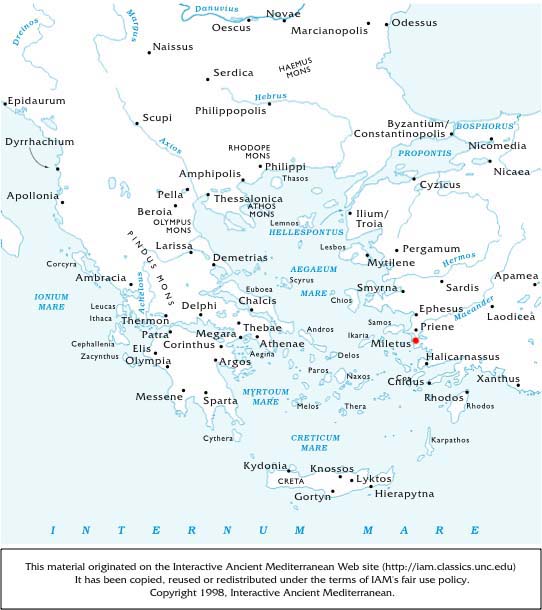One of the greatest cities of Asia Minor. It belonged territorially to Caria and politically to Ionia, being the southernmost of the twelve cities of the Ionian confederacy. The city stood upon the southern headland of the Sinus Latmicus, opposite to the mouth of the Maeander, and possessed four distinct harbours, protected by a group of little islands; its territory was rich in flocks, and the city was celebrated for its woollen fabrics, the Milesia vellera.At a very early period it became a great maritime State, and founded numerous colonies, especially on the shores of the Euxine. Among these were Abydos, Tomi, Olbia, Cyzicus, and Odessus; and in Egypt, Naucratis.
It was the birthplace of the philosophers Thales, Anaximander, and Anaximenes, and of the historians Cadmus and Hecataeus.
It was the centre of the great Ionian revolt against the Persians, [p. 1043] after the suppression of which it was destroyed (B.C. 494). It recovered sufficient importance to oppose a vain resistance to Alexander the Great, which brought upon it a second ruin.
Under the Roman Empire it still appears as a place of some consequence.
The earlier name of Miletus is said to have been Pityusa (Pituousa) or Anactoria (Anaktoria). See Herod. i. 17-20, 141; vi. 6; Arrian, Anab.i. 18; and Rayet and Thomas, Milet et le Golfe Latmique (Paris, 1877). (Harpers Dictionary of Classical Antiquities, 1898)
